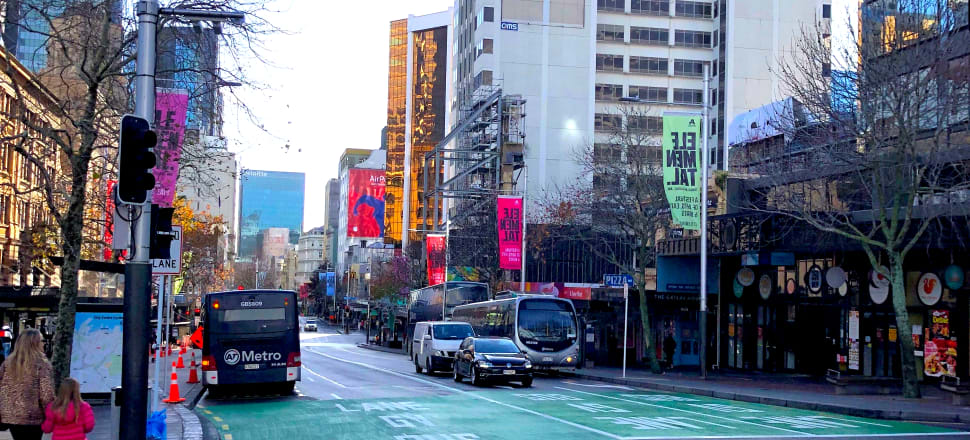
Has Covid-19 been a death knell for CBDs? There are vacant shopfronts along Auckland's Queen Street - but also optimism it can be brought back to life.
Downtown Auckland is suffering from vacant shopfronts and offices, rough sleepers, crime and construction noise.
But it's too important to write off. This area of 4.3 square kilometres generates $23 billion, or 20 percent, of the city's economic output and 45,000 people live here.
The Detail is on Queen Street with NZME journalist Simon Wilson, to find out what's wrong and how it should be fixed, while Jeremy Hansen, communications and community manager for Britomart Group, explains how offices are being revamped for the new hybrid way of working.
When it comes to the city centre's problems, Wilson says Queen Street is the biggest worry. He's counted 38 empty shops and says Covid-19 is not entirely to blame - many shops and offices were sucked out of Queen Street and into the newly developed precincts of Britomart and Commercial Bay by the waterfront.
The Queen Street landlords and shopkeepers who stayed watched it happen over several years, complained and did almost nothing to fight back, he says.
He believes it can be revived, but the property owners need to "activate" the empty shops and offices, even if it means dropping their prices and turning offices into apartments.
Wilson says there are some big solutions underway under the city centre masterplan, but they're taking a long time. The solutions are aimed at getting more people onto Queen Street by making footpaths wider, completing the City Rail Link and building light rail, closing blocks of the street to cars and getting the message to drivers that it's not a through road and they can't park outside their favourite shop.
"This is not a small village, it is not Taihape, this is a big city, it's not how it can function. You make it a great place to be on foot and you attract people to it."
Aotea Square is buzzing with families heading to the skating rink during school holidays but the perennial problem for the square is that it’s not "activated all round its perimeter".
The Town Hall, for example, is a beautiful building but it doesn’t open out to the square. The big Sky World Entertainment Centre, a relic of the late 1990s, has bars and restaurants but none are "activated" to the square.
"Auckland has an opportunity there to have the European-style cafes spilling out to the piazza. We've actually got it, we built it, it's right there, we don't use it like that," says Wilson.
He thinks businesses should take a leaf out of Ponsonby Road's book and run regular market days and other events to draw people there.
Hansen says there is confidence downtown will pick up in spring when tourists in greater numbers return and more workers go back to the offices.
"The central city is far from dead. Thousands of people work here and thousands more live here. It's about readjusting."
Hansen describes a mixed picture for businesses at Britomart. The restaurants and cafes are thriving, but retailers are finding it more difficult, while firms with offices in Britomart are reporting that workers are slowly returning.
"The challenges Auckland central city is facing are not unique in the least, but I do think that businesses here are being much more measured in their response. In the US you've seen a lot of firms go completely virtual and they try to get out of leases and allow people [workers] to live wherever they want to.
"Here, the people I've been talking to are being less hurried in their response, they've embraced flexibility but none of them are downsizing."
Hansen says overseas examples are being closely watched but no comparable city has cracked it in terms of revitalising the central city.
"Central cities have been the areas most affected by Covid-19 and therefore that tail is longer for them in terms of the comeback as well."
Find out how to listen and subscribe to The Detail here.
You can also stay up-to-date by liking us on Facebook or following us on Twitter.








